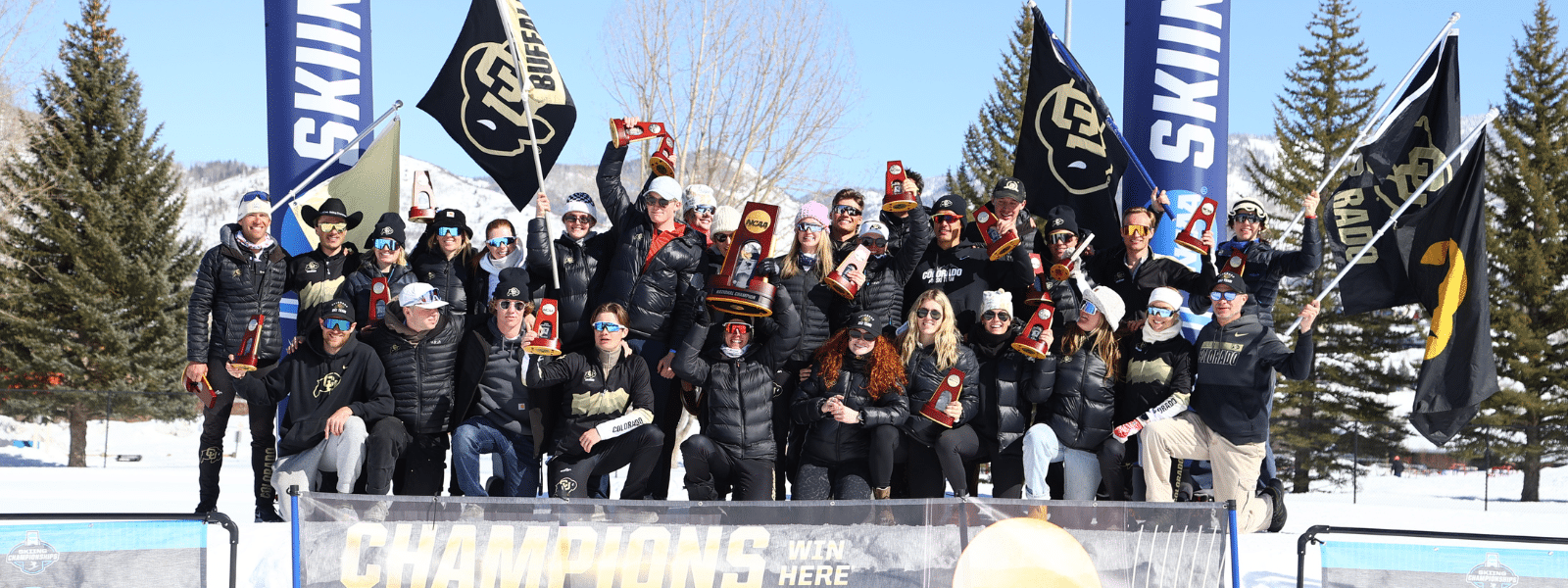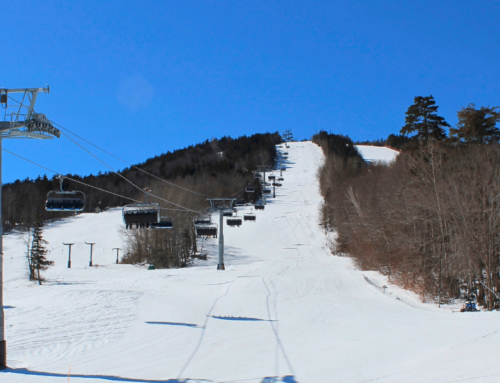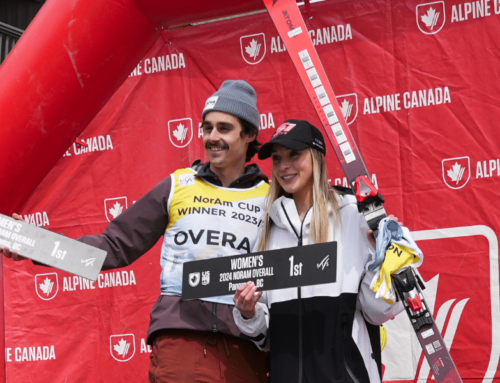You’ve Got the Power: Rule changes come from the membership
Just four months ago at the USSA Congress held in Park City, Utah, a number of proposals passed including one to change the GS radius for U19s, aligning the rules with FIS standards, and another to implement adders for exceptional races to maintain the integrity of the points system. Inevitably, there have been mixed emotions about the changes, but those who have voiced the most frustration seem to harbor misunderstandings about how the mandates were approved in the first place.
There is no USSA-employed official in an ivory tower who creates new rules based on whims. The great Wizard of Oz who dictates these changes is actually a collection of the very same people you see each weekend at your local ski club. For a new rule to be adopted at Congress, an extensive democratic process must first take place – one in which volunteer representatives from clubs across the country, USSA employees, and athletes vote on proposals that originate from the membership. This cohort of volunteer members comprise what is known as the Alpine Sport Committee (ASC).

The ASC sits at the top of the decision-making totem pole for alpine skiing in the United States, and according to its mission, it works “with the staff of USSA to develop plans, strategies, and policies for submission to the president and CEO for the development and operations of alpine skiing and to assist USSA in the operation of the alpine skiing programs consistent with FIS regulations, USSA bylaws and The Ted Stevens Olympic and Amateur Sport Act.” In layman’s terms, the ASC oversees the development of rules and manages competition for alpine skiing in the U.S.
At the helm of the ASC is committee chair Darryl Landstrom, who just started his second 4-year term in the role. His family, including a son and grandchildren, have been involved in alpine skiing and jumping for years, but day-to-day he runs a consumer product sales agency. Landstrom is joined by 19 other committee members including athlete representatives like Warner Nickerson, USSA Alpine Development Director Chip Knight, regional representatives, and others. Every member of the ASC (aside from the secretary) has voting rights on the various proposals that come through at Congress. But before proposals even make it to the ASC, they are vetted through several other layers of discussion and voting.
“Under the Alpine Sport Committee, we have subcommittees and working groups that report to the sport committee itself,” Landstrom explains.
While USSA staff may submit proposals, those proposals must follow the same approval process as those brought from the regions, meaning there’s no guarantee they’ll be approved. In the case of the new U19 GS ski rules, an Equipment Task Force was formed under Knight’s guidance and included a team of coaching experts as well as brand representations from major manufacturers like HEAD, Rossignol and Blizzard. As a team, the task force dived in deep, researching what would be best for American ski racers as a whole. Rob Worrell, a coach at Ski and Snowboard Club Vail, was named to the task force because of his past advocacy for and success with moving athletes onto longer and more aggressive skis earlier in their careers than many other coaches.
“Chip did a good job of having several different people on the task force,” Worrell insists. “He had equipment manufacturers. … Where I came into the task force is from the coaching perspective and development perspective.”
After extensive discussions in a number of meetings and conference calls, this group used its combined experience to draft a proposal that accounted for all constituent interests while charting a sustainable path forward. Once the task force was prepared to submit the proposal for consideration, Mike Morin, Stratton Mountain School’s alpine program director and task force representative, presented the proposal to the Alpine Development and Education Subcommittee, which he chairs.
This particular subcommittee focuses “on the national development system and performance plan, working on athlete advancement, athlete preparation and competition programs, and working cooperatively with the USSA regions and staff to manage national and inter-regional projects, track elite regional athletes, develop long-range athletic plans for individuals and for targeted groups, and to improve the transition to national team programs.”
The USSA Equipment Matrix, a familiar document that dictates ski regulations in all age classes, falls under jurisdiction of the Alpine Development and Education Subcommittee.
“He (Morin) had a couple of conference calls (with his subcommittee) prior to Congress last May, and then he had two meetings during Congress and this particular issue was on his agenda, and it was vetted out quite thoroughly,” Landstrom says. “I attended one of the meetings … and as a subcommittee, they decided that it was then appropriate to take it to the Alpine Sport Committee.”
The motion to approve the U19 GS radius proposal in the subcommittee’s spring meeting passed 5-to-3, so there was some dissent at the subcommittee level. However, the Alpine Sport Committee passed the motion unanimously.
“It’s going to eliminate confusion for one,” Landstrom notes of the new ski change. “It’s going to align us more closely with FIS. It’ll have athletes skiing on equipment that is consistent throughout the country; and while it might create some hardships initially for an athlete whose parents perhaps purchased a pair of skis last year and are going to have to replace them this year, there’s a lot of used equipment with the new radius available on the market as well.”
Paul Van Slyke, vice chair of the ASC, FIS TD commissioner for the U.S. and a member of the Alpine Judicial Committee, expresses a belief that the new ski regulations will increase safety by ensuring that athletes are on the most appropriate skis for their age group and for GS course sets.
“If you’re not involved and you feel so strongly about an issue, you need to get involved because that’s how our sport works.” – Paul Van Slyke
Technically, the buck doesn’t stop with the ASC at USSA Congress. The Board of Directors has to give any ASC-approved proposal the final go-ahead before it becomes a rule, which the board did in the case of the new ski radius. Van Slyke, who is also the parent of two ski racers, has been involved on the committee for more than a decade, and says that generally the board agrees with the ASC. Though, the TD recalls one time where the board sent a proposal back.
“Just last year … we were deciding how to manage the new helmet rules,” he explains. “There was a proposal built to make a soft landing with the helmet rule and try to give some opportunity for the families and the clubs to ease them in and having a grace period of – let’s say – Jan. 15, where until Jan. 15 you get a warning, and then after Jan. 15, it’s hard and fast, and that proposal got nixed by the board and sent back to us.They said, ‘Enforce the rule.’”
In the case of the helmet rule, the board voted to enforce it not only to comply with the FIS but also to mitigate potential liability associated with noncompliance.
At the end of the day, no single individual decides to make equipment changes that affect the entire country. While USSA staff may submit proposals for consideration, they must follow the same approval process as any other with extensive discussions and votes cast by a wide-ranging representation of the USSA membership to determine whether it is accepted or declined. In the case of the GS radius change, the decision was clear.
“The thing that I would tell anybody in our sport that complains to me about any rule change is that these changes are made by us, the membership of USSA; and if you’re not involved and you feel so strongly about an issue, you need to get involved because that’s how our sport works,” Van Slyke implores. “It’s made of rules and changes. Our development as an organization is made up of the populous of our membership.”
The reality is that when dealing with a membership as widespread as USSA’s, changes are rarely going to be unanimously popular across the board. Though it’s a challenge to please everyone, the democratic process that underlies these decisions includes multiple checks and balances to ensure that they do the most good for the majority of the membership.
Disclosure: USSA and SkiRacing.com are media partners.






















